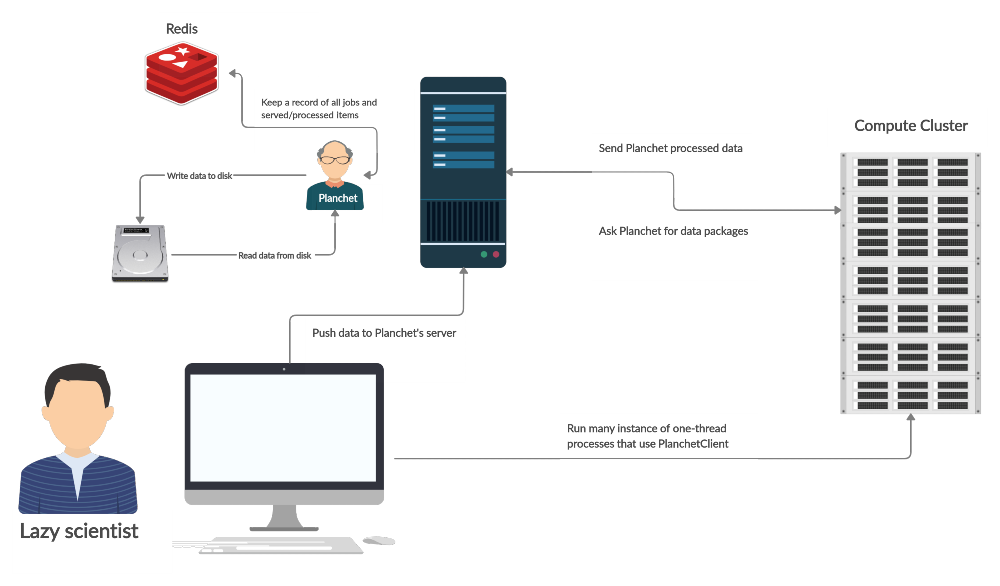👋 Introduction¶
Planchet (pronounced /plʌ̃ʃɛ/) is a data package manager suited for processing large arrays of data items. It supports natively reading and writing into CSV and JSONL data files and serving their content over a FastAPI service to clients that process the data. It is a tool for scientists and hackers, not production.
How it works¶
Planchet attempts to solve the problem of controlled processing of large amounts of data in a simple and slightly naive way. It controls the reading and writing of the data and leaves the processing to the user. The usage takes roughly the following shape:
You start by creating a job which specifies where to read, where to write, and what classes to use for that.
Then, you ask for n data items, which your process works through locally.
When your processing is done, you send the items back to the service to be written to disk.
All jobs and item statuses are logged by the system which assures that if the process or even the service is interrupted, only in-flight data processing will be lost.
Constraints¶
Single thread: Planchet is running in a single thread to avoid the mess of multiple processes writing in the same file. Until this is fixed (may be never) you should be careful with your batch sizes – keep them big enough to avoid overwhelming the service with requests but not too big so that you avoid request timeouts.
Independence: this tool was built in mind with independence of the data points. What that means is that if you are processing a CSV, you don’t need line 1 to process line 2. Technically, even in that case you could implement something using Planchet, but the logic on the client side will not be pretty 👹.
